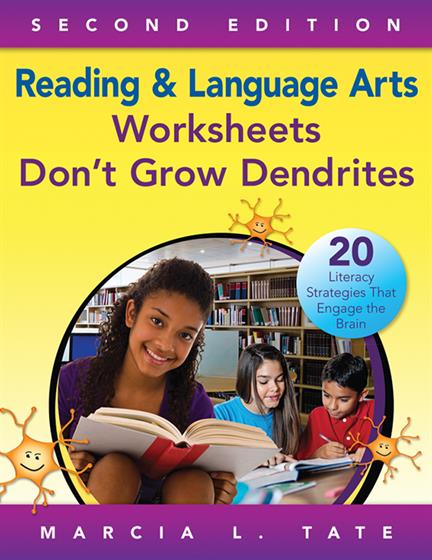Acknowledgments
About the Author
Introduction
Strategy 1: Brainstorming and Discussion
What: Defining the Strategy
Why: Theoretical Framework
How: Instructional Activities
Reflection and Application
Strategy 2: Drawing and Artwork
What: Defining the Strategy
Why: Theoretical Framework
How: Instructional Activities
Reflection and Application
Strategy 3: Field Trips
What: Defining the Strategy
Why: Theoretical Framework
How: Instructional Activities
Reflection and Application
Strategy 4: Games
What: Defining the Strategy
Why: Theoretical Framework
How: Instructional Activities
Reflection and Application
Strategy 5: Graphic Organizers, Semantic Maps, and Word Webs
What: Defining the Strategy
Why: Theoretical Framework
How: Instructional Activities
Reflection and Application
Strategy 6: Humor
What: Defining the Strategy
Why: Theoretical Framework
How: Instructional Activities
Reflection and Application
Strategy 7: Manipulatives, Experiments, Labs, and Models
What: Defining the Strategy
Why: Theoretical Framework
How: Instructional Activities
Reflection and Application
Strategy 8: Metaphors, Analogies, and Similes
What: Defining the Strategy
Why: Theoretical Framework
How: Instructional Activities
Reflection and Application
Strategy 9: Mnemonic Devices
What: Defining the Strategy
Why: Theoretical Framework
How: Instructional Activities
Reflection and Application
Strategy 10: Movement
What: Defining the Strategy
Why: Theoretical Framework
How: Instructional Activities
Reflection and Application
Strategy 11: Music, Rhythm, Rhyme, and Rap
What: Defining the Strategy
Why: Theoretical Framework
How: Instructional Activities
Reflection and Application
Strategy 12: Project-Based and Problem-Based Instruction
What: Defining the Strategy
Why: Theoretical Framework
How: Instructional Activities
Reflection and Application
Strategy 13: Reciprocal Teaching and Cooperative Learning
What: Defining the Strategy
Why: Theoretical Framework
How: Instructional Activities
Reflection and Application
Strategy 14: Role Plays, Drama, Pantomimes, and Charades
What: Defining the Strategy
Why: Theoretical Framework
How: Instructional Activities
Reflection and Application
Strategy 15: Storytelling
What: Defining the Strategy
Why: Theoretical Framework
How: Instructional Activities
Reflection and Application
Strategy 16: Technology
What: Defining the Strategy
Why: Theoretical Framework
How: Instructional Activities
Reflection and Application
Strategy 17: Visualization and Guided Imagery
What: Defining the Strategy
Why: Theoretical Framework
How: Instructional Activities
Reflection and Application
Strategy 18: Visuals
What: Defining the Strategy
Why: Theoretical Framework
How: Instructional Activities
Reflection and Application
Strategy 19: Work Study and Apprenticeships
What: Defining the Strategy
Why: Theoretical Framework
How: Instructional Activities
Reflection and Application
Strategy 20: Writing and Journals
What: Defining the Strategy
Why: Theoretical Framework
How: Instructional Activities
Reflection and Application
Resource A: Brain-Compatible Lesson Design
Resource B: Graphic Organizers
Bibliography
Index



